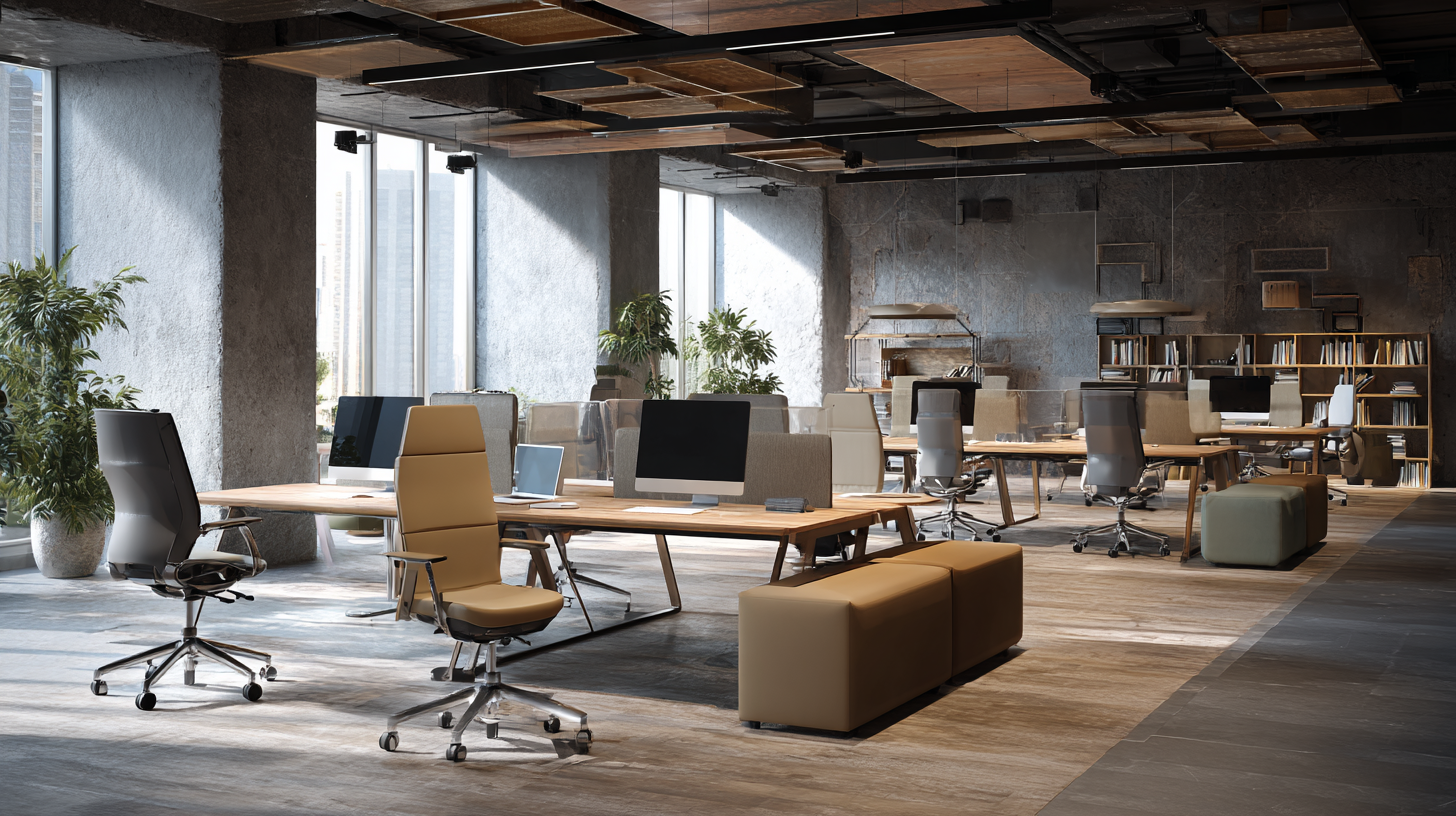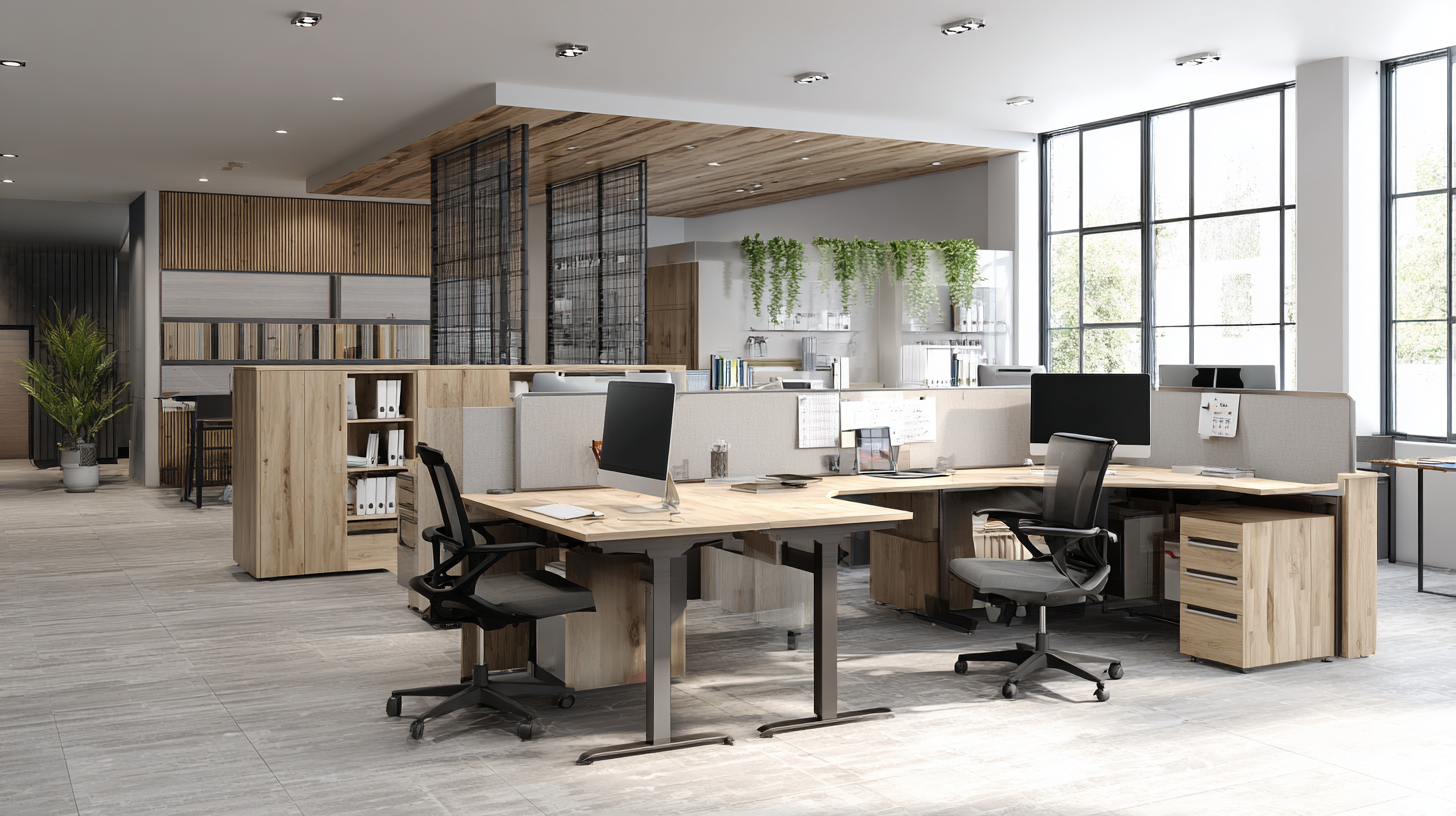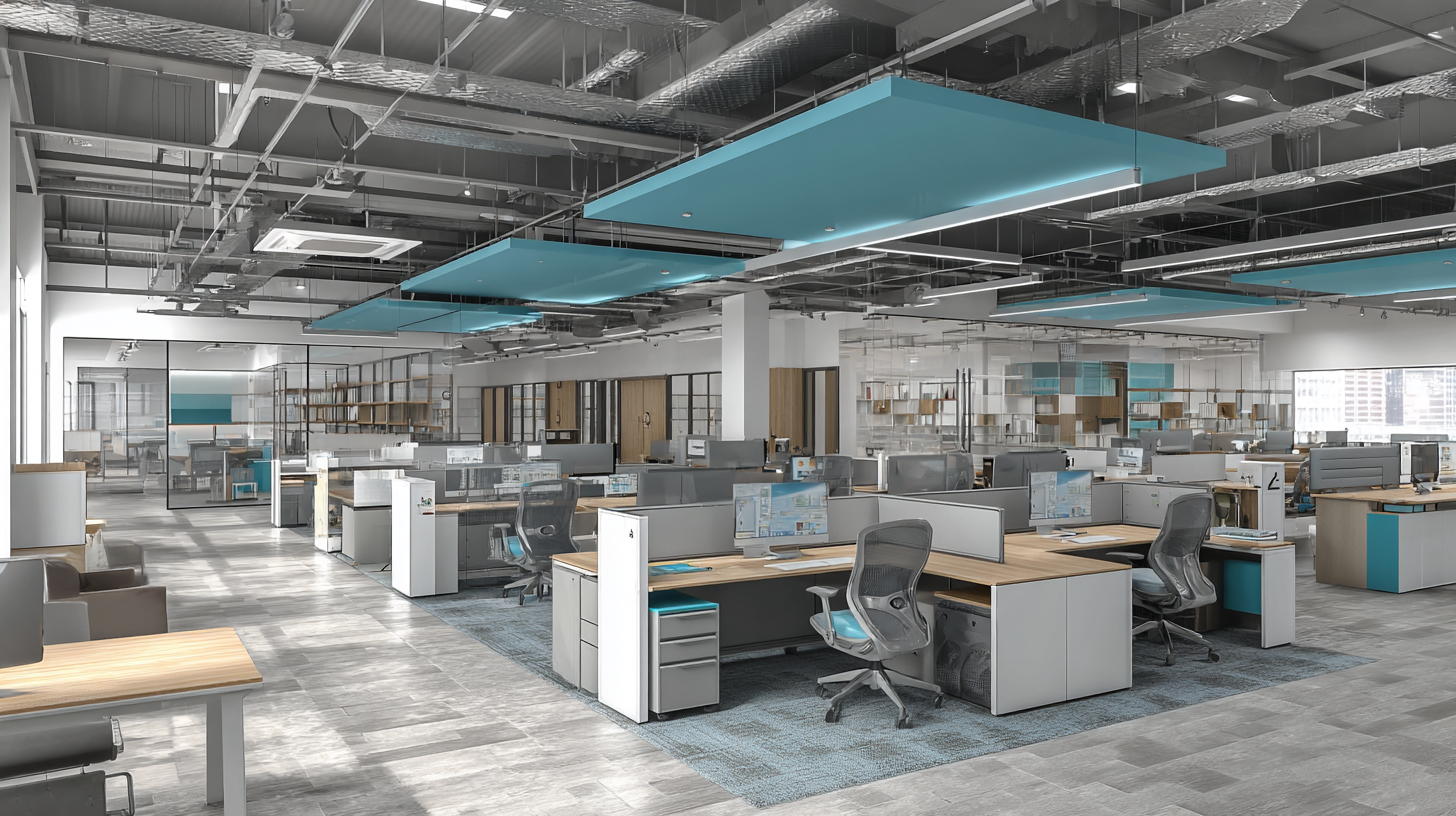Staverton is a British designer & manufacturer of contemporary office furniture.
Call us today: +44 (0)20 3794 1200
©2025 Staverton (UK) Ltd | Terms | Disclaimer | Cookies | Privacy
![]()
In the rapidly evolving landscape of workspace dynamics, the year 2025 promises to bring forth groundbreaking tech trends that will redefine how we interact with our work environments. As businesses strive to create more adaptable and collaborative spaces, the selection of high-quality Office Furniture Solutions becomes paramount. Choosing the right suppliers is essential not only for enhancing functionality and aesthetics but also for aligning with the technological advancements that shape modern offices. This blog will delve into effective strategies for identifying and partnering with reliable vendors, ensuring that your workspace is equipped with the best furniture solutions that cater to both current needs and future innovations. Embrace the future of office design with insights on how to transform your workspace into a hub of creativity and productivity.

As we move towards 2025, the integration of emerging technologies is set to revolutionize office dynamics dramatically. Among the most significant innovations are advanced imaging technologies, such as real-time boundary detection and high-dynamic range imaging, which have far-reaching applications, including in medical imaging. Such developments not only enhance efficiency but also offer new ways to visualize and interact with spaces, creating a more dynamic work environment.
Additionally, the rise of digital twins—virtual representations that respond dynamically to real-time data—promises to transform how we manage and design office spaces. By utilizing data analytics and modeling, companies can optimize workspace configurations, leading to improved productivity and employee satisfaction. These technologies, combined with the latest advancements in HR tech that foster better collaboration between humans and machines, highlight a burgeoning trend of technology-driven space management in the workplace, paving the way for the offices of the future.
Choosing the right office furniture is crucial in achieving seamless tech integration in the workplace. As we approach 2025, the demand for adaptive and functional furniture will only grow. When considering office furniture, it’s important to prioritize modular designs that allow for flexibility and can easily accommodate changing technology needs. Look for pieces that can support various configurations, enabling teams to collaborate efficiently while enhancing productivity.
Tip: Always measure your workspace before investing in new furniture. This ensures that the selected pieces fit comfortably within the layout, leaving room for tech installations like cables and equipment. Additionally, opt for furniture with built-in cable management features to maintain a clean and organized workspace, minimizing distractions.
Moreover, ergonomic considerations shouldn’t be overlooked. With the increased use of technology, employees will spend longer hours at their desks, making comfortable seating and adjustable work surfaces essential. Furniture that supports good posture can lead to better focus and lower health risks associated with prolonged sitting.
Tip: Test chairs and desks for comfort before purchasing. Allow staff to try out different options to ensure the chosen furniture meets their needs, ultimately creating a space that fosters well-being and enhances tech integration.
In the evolving landscape of modern workplaces, ergonomics plays a pivotal role in enhancing productivity and employee well-being. With the global furniture market projected to reach approximately USD 128.61 billion by 2030, an understanding of ergonomics in office design becomes increasingly crucial. Ergonomic office furniture, such as adjustable desks and supportive chairs, helps mitigate musculoskeletal issues, which are a common deterrent to workplace effectiveness. A recent study highlights that well-designed work environments can significantly improve comfort levels, with employees reporting up to a 40% increase in productivity when utilizing ergonomic solutions.
Moreover, as workplace design continues to transition towards flexibility and collaboration, implementing ergonomic principles not only supports individual health but also fosters a more dynamic and interactive work culture. Modern designs prioritize open layouts and multifunctional furniture, encouraging movement and interaction among employees. Enhancing workspace functionality in this manner aligns with the broader trend of prioritizing employee well-being, which ultimately leads to a healthier, more engaged workforce willing to contribute to the organization's success.

As the workplace continues to evolve in response to technological advancements and changing employee needs, the emphasis on sustainable office solutions is more critical than ever. In 2025, businesses are prioritizing environmentally friendly choices, integrating eco-conscious designs that promote both productivity and well-being. This transformation includes sourcing furniture made from renewable materials, utilizing recycled components, and prioritizing manufacturers with sustainable practices. By choosing furniture that not only looks good but also contributes to a healthier planet, companies are demonstrating their commitment to corporate responsibility.
Moreover, the integration of biophilic design—where natural elements are incorporated into the workspace—has gained traction. Furniture that complements these designs, such as plant stands or pieces made from natural wood, fosters a connection to nature, boosting employee morale and creativity. Employers are recognizing that creating a sustainable environment is not just a trend but a necessary step in cultivating a workplace that attracts and retains talent. Embracing these sustainable furniture solutions not only enhances office aesthetics but also sets a precedent for a greener future, aligning business goals with environmental stewardship.
| Trend Category | Trend Description | Sustainability Impact | Furniture Recommendation |
|---|---|---|---|
| Ergonomics | Focus on health and well-being through ergonomically designed workspaces. | Reduces health issues, promotes productivity. | Adjustable desks, ergonomic chairs. |
| Smart Technology | Integration of smart devices for enhanced user experience. | Energy efficiency and resource optimization. | Smart lighting and climate control systems. |
| Modular Furniture | Flexible office layouts that can be reconfigured as needed. | Reduces waste through reuse and adaptability. | Modular desks and seating arrangements. |
| Biophilic Design | Incorporating natural elements into office design. | Improves air quality and employee well-being. | Green walls, natural materials. |
| Remote Work Solutions | Tools and furniture that support remote working effectively. | Supports work-life balance, reduces carbon footprint from commuting. | Portable desks and office kits. |
As businesses increasingly prioritize collaboration, the design of workspace dynamics is undergoing a transformation. A recent report from the International Society for Technology in Education (ISTE) highlights that 76% of organizations are enhancing their collaborative spaces to promote team engagement and productivity. This shift toward open, flexible environments requires furniture solutions that not only facilitate interaction but also adapt to the diverse needs of the workforce.

Choosing the right office furniture for collaborative spaces involves understanding the functionality and aesthetics of the pieces. According to a study conducted by Steelcase, 90% of employees feel more productive in an adaptable workspace. Furniture such as movable desks, modular seating, and collaborative workstations enables seamless transitions between individual tasks and group projects. As companies prepare for 2025, investing in furniture that supports a variety of working styles and enhances the overall office experience is crucial for fostering innovation and collaboration.
Staverton is a British designer & manufacturer of contemporary office furniture.
Call us today: +44 (0)20 3794 1200
©2025 Staverton (UK) Ltd | Terms | Disclaimer | Cookies | Privacy
![]()
Please enter your details below to access the design files.
Please enter your details below to access the design files.
Please enter your details below to access the design files.
